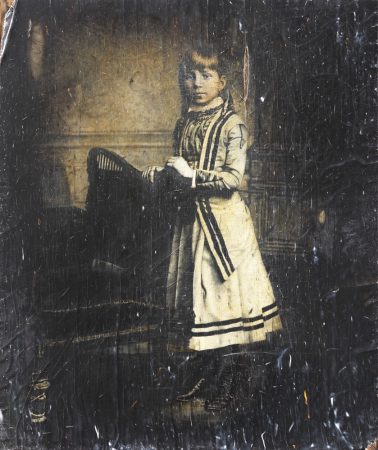Takahiro Yamamoto Solo Exhibition “HONEBANA”
■GALLERY KOGURE NEW YORK (closed)
■2017.11.15 – 12.29
■11:00 – 18:00
■Closed on Sunday and Monday
GALLERY KOGURE NEW YORK and Hpgrp gallery New York is pleased to announce solo exhibition of Takahiro Yamamoto.
Throughout his work, Yamamoto has focused on themes of replicative techniques and the environments that foster them. His series, Re:view, investigates the difficulty of identifying what is original versus what is reproduced in today’s context, while his series, Where the artificial stops and the real starts,builds on that concept to demonstrate the fragility of the very term “originality”.
According to Yamamoto, the increasing abundance of replicative technology has already negated our ability to compare originals and reproductions. In spite of this, an original continues to hold much more value than its duplicate. The word “original” continues to evoke concepts of uniqueness or singularity — concepts which are generally accepted as incompatible with reproductions. However, is this really the case? Yamamoto has invested in the potential for reproductions to acquire uniqueness and distinctness, eventually coming upon the concept for Aging. At the moment the duplicate is created, it becomes impossible to distinguish between an object and its reproduction. However, with the passing of time, that object may change in color or sustain damage, coincidentally allowing us to distinguish between it and its reproduction. In this instance, is it possible for the reproduction to obtain uniqueness and singularity? In fact, Yamamoto’s past works have consistently developed this motif, portraying the reproduction’s ability to achieve its own quality as a result of changes in the original over the course of time.
Yamamoto drew inspiration for Aging from several of Claude Monet’s painting series. During the 1890s, Monet began work on his Haystacks, Poplars, and Rouen Cathedral paintings. These series make use of the same composition and motif, rendered in morning, midday, and evening to depict changes in light. Monet believed that as light shifted color tones, it could ultimately change the same object into a separate entity. This point of view would connect years later to Andy Warhol’s Color Variations. In addition to the changes of color throughout Monet’s series, there is one more variable: time. In the Poplarsseries, the branches and leaves of the trees change as time progresses, while in the Haystacks series, snow gathers on the haystacks. Monet’s depictions of the shifts in light and time created a phenomenon. In letters to his friends, Monet described the notion of capturing a moment, and through this reference, one can see that even the shortest increment of time can change identical objects into separate entities.
Time (and the experiences that go hand in hand with it) changes the same object into something different. With this central philosophy, Yamamoto presents his series Aging painting. By faithfully recreating photographs with precise intention, down to every worn and aged detail, these works embody their own sense of uniqueness and singularity in spite of being recreations. They embody a question Yamamoto has invested in — is there something to be gained in seeing them side by side with their originals?
Please come and see the exhibition.
GALLERY KOGURE NEW YORKとHpgrp gallery New Yorkでは、山本隆博個展を開催いたします。
山本はこれまで、複製技術やそれをとりまく状況をテーマに制作を行ってきた。
『Re:view』シリーズでは、今日におけるオリジナルと複製の識別の難しさを示し、『Where the artificial stops and the real starts』シリーズでは、それに加えて、オリジナリティという言葉の脆弱性を示した。
山本によれば、複製技術の発達によって、オリジナルと複製という対比は既に成り立たなくなっている。しかし、いまだにオリジナルは複製に対して圧倒的な価値を持っている。「オリジナル」という言葉には「唯一性」、「一回性」という概念が宿っているからである。そして、一般的にこれらの概念は複製には宿り得ないと考えられている。しかし本当にそうだろうか。山本は、複製が「唯一性」や「一回性」を獲得する可能性について考え、「Aging」という発想にたどり着いた。複製は、製造された瞬間には、あるものとそれ以外とは識別が不可能である。しかし、時間の経過にともない、あるものは変色し、またあるものは損傷し、同時に製造されたその他との識別が可能になる。これは、複製が「唯一性」や「一回性」を獲得したと言えるのではないだろうか。現に、山本が過去の作品でモチーフとしてきたものは、独自の経年変化によって個別の味わいを獲得した複製である。
山本は、『Aging』の発想のヒントをクロード=モネの連作から得たという。モネは1890年代に『積み藁』『ポプラ並木』『ルーアン大聖堂』といったシリーズに着手している。これらシリーズは、同じ構図で切り取った同じモチーフを、朝、昼、夜の光の変化によって描きわけた連作である。モネは、光による色調の変化が、同じものを別のものへと変化させてしまうという意識を持っていた。これはのちのアンディ=ウォーホルのカラーバリエーションとも繋がる視点である。ところが、モネのこれらのシリーズの中で、色彩以外にもう一つ変化しているものがある。「時間」である。『ポプラ並木』の連作では、時間の経過とともにポプラの枝葉が変化し、『積み藁』には雪が積もったりしている。またモネが描きわけた光の変化も時間の変化によって引き起こされている現象である。モネが友人にあてた手紙の中に「瞬間性」を切り取ることについての言及があり、わずかな時間の変化が同一のものを別のものへと変えてしまうという意識をもっていたことが伺える。
時間(やそれに伴うあらゆる経験)が「同じもの」を「別のもの」へと変化させる。その発想をもとに、山本は今回『Aging painting』というシリーズを発表する。写真を忠実に再現した絵画に意図的に劣化をほどこす本シリーズには、たとえ複製であっても、「唯一性」や「一回性」を獲得し、オリジナルと並ぶ価値を持ちうるのではないかという山本の問いが込められている。

